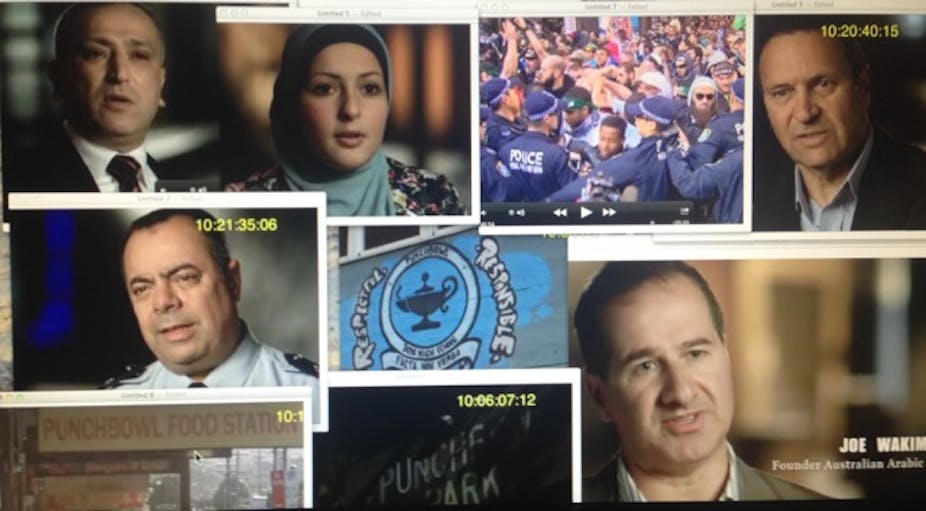The considerable attention given recently to the process of radicalisation is crying out for a social analysis, rather than the conservative media’s predictable campaign to tag it with a religious label, or mobilise a heightened moral panic.
At its heart this is not an issue of “radicalisation”, which means an increasingly fervent engagement with the roots of an issue. Rather, it is about comprehending the conditions under which an individual decides to engage in murder and suicide. What do we know about why some youth choose this course, and what can be done to head it off?
Amplifying deviance
Young people often express anomic behaviour when they find aspirational pathways blocked. They turn to criminal activity to generate the money and subcultural status they seek. Racism, poverty, prejudice, eroded self-esteem and marginalisation can add to this.
The behaviour becomes alienation when they abandon accepted social goals and choose alternative goals and pathways. That shift is what takes a young criminal or anguished adolescent and turns them into a young potential terrorist.
The trick for the jihadist recruiter is to find the anomic child and transform them into someone whose alienation will run the gamut to murder, usually by providing an affirmative role model that speaks to their unease.
For jihadist recruiters, often hardened criminals, the psychological grooming of teenagers is part of their skill-set. And every action by the state, the media and the wider social milieu that screams moral panic reinforces the alternative persona of hero for the cause.
In researching the SBS series Once Upon a Time in Punchbowl, we traced the “natural history” of the youth gangs that blossomed in Punchbowl’s Telopea Street in the late 1990s. This was the first generation after the refugee arrivals of the 1970s.
Public denigration of Muslims had begun early, institutionalised in Sydney in the Tempe “picnic riot” in 1993, when police with dogs and horses harassed hundreds of people at an Arab community festival. Arab and Muslim self-esteem was under constant attack.
There were few, if any, popular culture heroes in wider society who encapsulated either an Arab history or an Islamic cultural frame of reference. Critical, though, was the role that the second generation of the “crime families” played as the role models for anomic youth.
The parents’ generation and the mosques were not attractive. They were often seen as subservient to white racist power in the case of the fathers, and as foreign, condescending and out of touch in the imams’ case. No wonder a minority of youth succumbed.
So, what’s missing?
When our team at University of Technology Sydney undertook research on the social ecology of young Muslims in Sydney and Melbourne in 2009, we wanted to know what “voices” they listened to. Who were their role models? What were their social values?
Most interviewees were from Muslim schools, so they came from a structured environment with sustained religious education and a systematic reinforcement of the values of Australian civic culture. They were conservative, anxious and assertive.
The kids who move into the anomic and then the alienated psychological space often come from environments where the messages are far less logically articulated. The government school system, with all its class, ethnic, racial and cultural cross-messages, seems to be one locale.
Unlike Punchbowl High, which was recomposed around a systematic moral economy of respect and civic honour, a number of the schools are still chaotic. The messages are anything but positive for the kids who are in danger of anomie.

There are no alternative Muslim moral heroes allowed on the pages of the Herald Sun or the Daily Telegraph, no Muslim newsreaders on Channel Nine and no hijabs outside SBS. The only “strong” Muslims permitted in the media are jihadists, defined by their willingness to take lives for the cause and sacrifice their own.
Yet many Australian Muslims are extraordinary achievers, successes and potential role models.
Our 2009 study showed the overwhelming role model for young Sydney Muslim men was rugby league player Hazem El Masri, who was seen to embody the best of both Australian and Muslim values of strength and masculinity. He refused to drink alcohol; he demonstrated a commitment to guidance for teens, and so on. He was a good Muslim and a good Australian.
So, a conversation between government and community leaders is doubtless important. Every time former prime minister Tony Abbott spoke on the issue he created another swatch of potential jihadis while also alienating community leaders and wrecking police and security strategies.
However, research suggests a critical part of the story has to be Australian Muslim role models, male and female, who have the respect and admiration of Muslims and non-Muslims.
We have had 40 years of the Australian media trying to ensure that doesn’t happen. No wonder there’s a problem.

